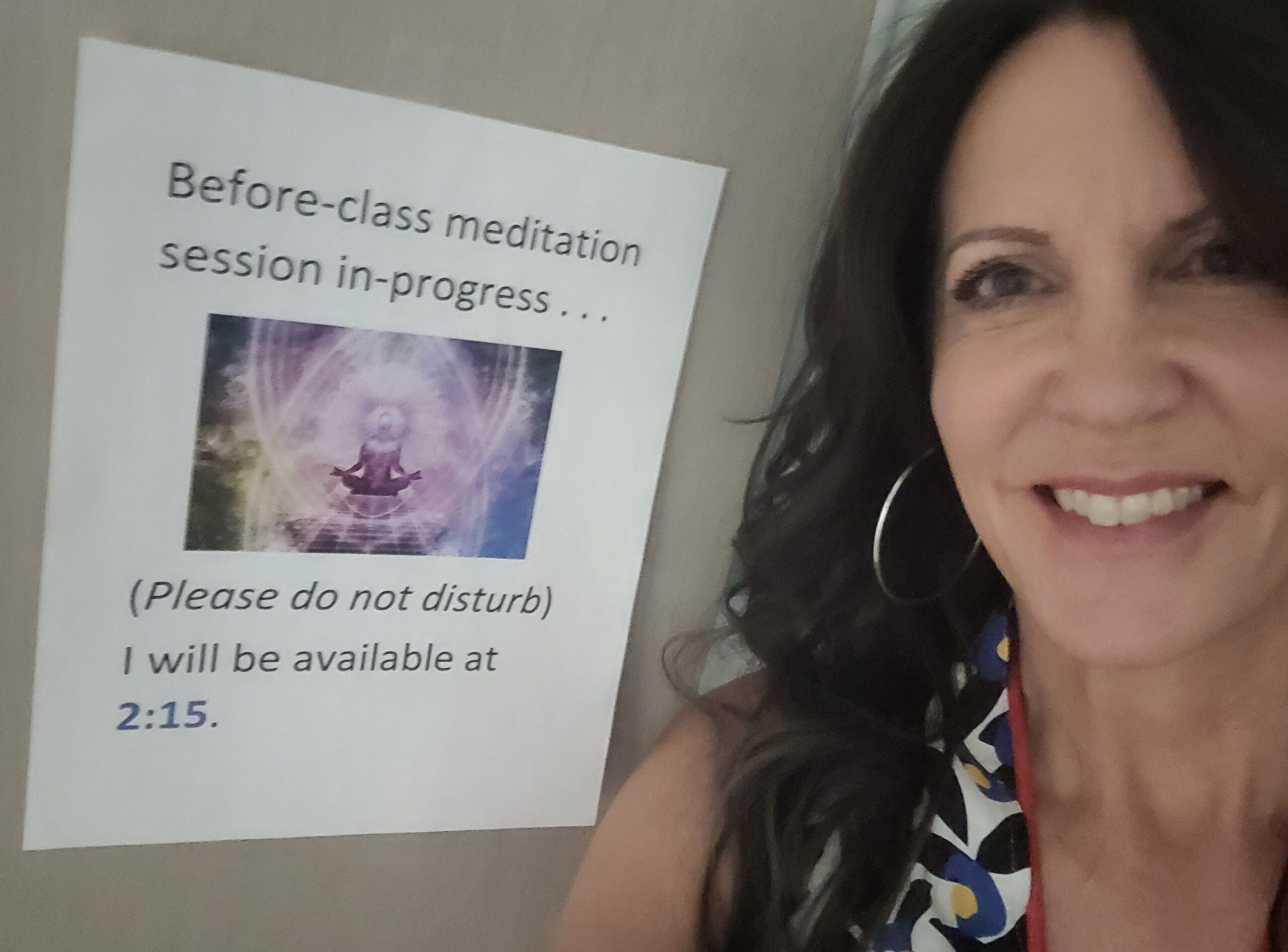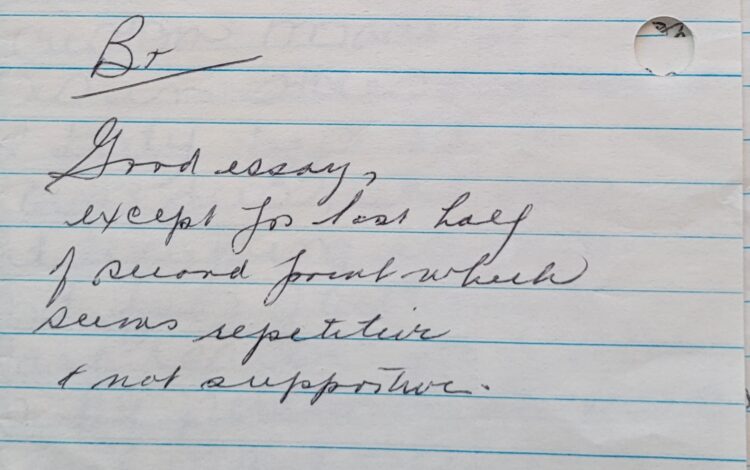I once lived next door to a woman named Elsie who was a glider. I don’t mean a hang-glider or a supermodel on a runway. Rather, her general mode of getting around in the world was slow and smooth. Each footfall was steady, her arms gently swaying as she walked.
Me, I am more of a scurrier. I always seem to be a step behind where I want to be at any moment. (One night, I caught myself literally running into bed.) So, I am jealous of Elsie’s cadence, her here-and-now presence – especially when I am walking sprinting into my classroom.
Picture my typical classroom entry: I fling myself through the door to start class. I’m pulling down the screen and tapping my fingers as the computer takes its sweet-a** time to wake up. I’m arranging the day’s materials while mentally rehearsing how the lesson will go down. At times, I’m breathless.
I really should provide popcorn for my students as they watch this weekly show.
Okay, maybe it’s not all that bad, but earlier this semester I had the sense that my Health Psychology class would be improved if I was more at-peace as I deliver my opening greeting. If I were more emotionally available to my students before class. If I modeled the very same self-regulation I encourage in them.
In the book The Spark of Learning, psychologist Sarah Rose Cavanagh supports this notion. Cavanagh advocates for teaching with mindfulness, or what she refers to as “a continual calling back to the present moment.” She also writes about presenting a sense of immediacy with students – showing I am interested in them, the subject, and the process of learning. None of this can occur if I am off kilter from minute one.
To change the way I typically fly into the room, I decided to set aside 15 minutes before each class for my own meditation and/or breath work. My class starts at 2:30, so I blocked off 2:00-2:15 as a repeating commitment on my calendar. I created a special meditation-do-not-disturb sign as a stiff arm to all door knockers. I face my chair away from my office window so I don’t have to worry about anyone seeing me in all my meditation glory.

Headspace is my meditation app of choice, but simply doing diaphragmatic breathing or box breathing works just as well. The point is to quiet the mind, soothe the stress response system, and tether to the present moment before greeting my students. To release the relentless chatter of the to-do list playing on an endless loop.
And so far it is working! I feel more relaxed as I start class now. I am able to enjoy initial class conversations with increased focus on the people in front of me. I sense that I am connecting better with my students. It also helps that I shared what I am doing with my students since breathing and meditation are topics in this particular course – a form of what Cavanagh refers to as metainstructing.
I may never naturally glide like Elsie, but before each class I can center myself through meditation like a yogi-boss!




